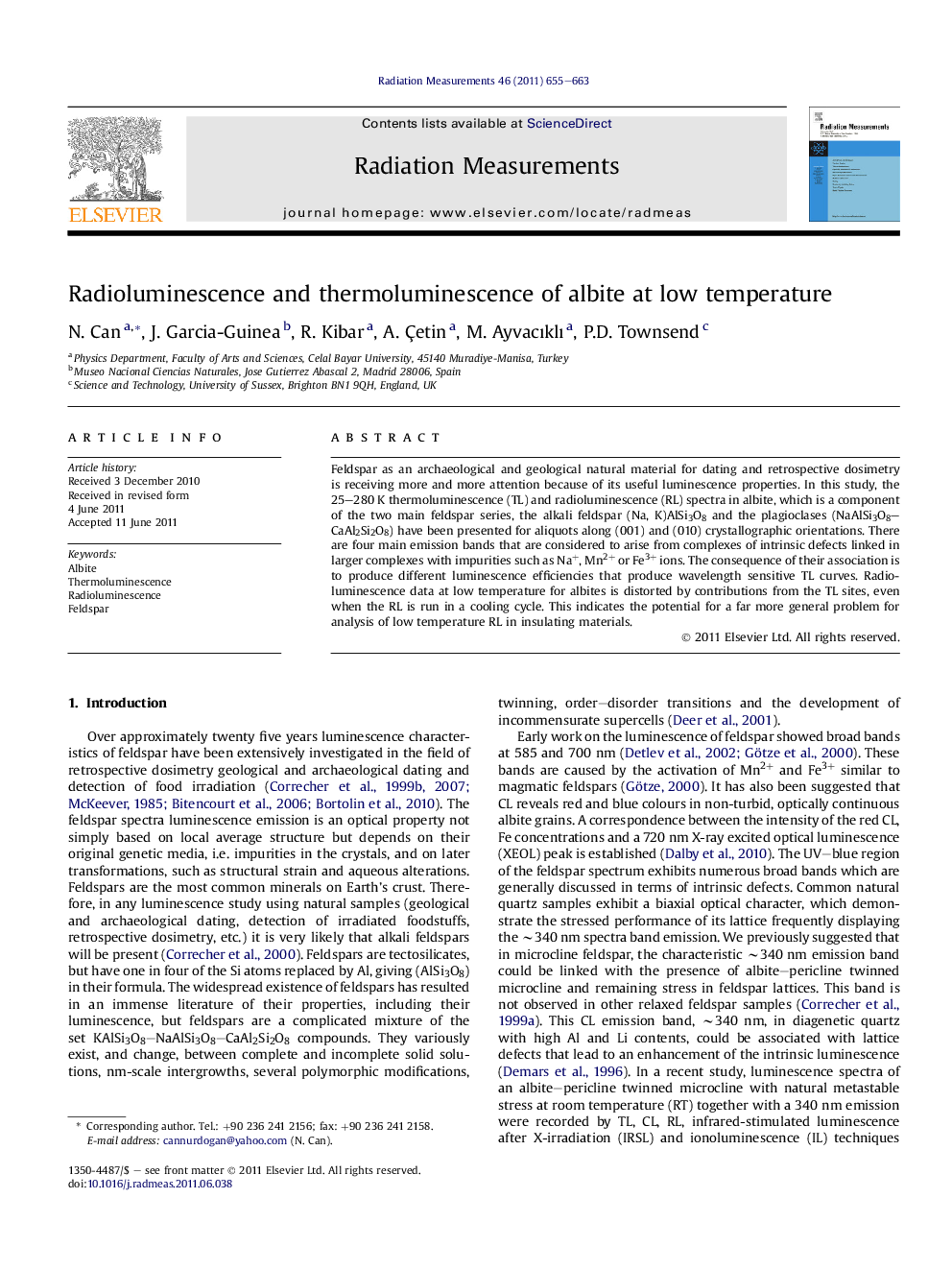| Article ID | Journal | Published Year | Pages | File Type |
|---|---|---|---|---|
| 1885190 | Radiation Measurements | 2011 | 9 Pages |
Feldspar as an archaeological and geological natural material for dating and retrospective dosimetry is receiving more and more attention because of its useful luminescence properties. In this study, the 25–280 K thermoluminescence (TL) and radioluminescence (RL) spectra in albite, which is a component of the two main feldspar series, the alkali feldspar (Na, K)AlSi3O8 and the plagioclases (NaAlSi3O8–CaAl2Si2O8) have been presented for aliquots along (001) and (010) crystallographic orientations. There are four main emission bands that are considered to arise from complexes of intrinsic defects linked in larger complexes with impurities such as Na+, Mn2+ or Fe3+ ions. The consequence of their association is to produce different luminescence efficiencies that produce wavelength sensitive TL curves. Radioluminescence data at low temperature for albites is distorted by contributions from the TL sites, even when the RL is run in a cooling cycle. This indicates the potential for a far more general problem for analysis of low temperature RL in insulating materials.
► TL and RL spectra in albite were presented for different orientations. ► There are 4 emission bands that are considered to arise from complexes of intrinsic. ► RL data at low temperature for albite is distorted by contributions from TL sites. ► This indicates the potential problem for analysis of low temperature RL.
